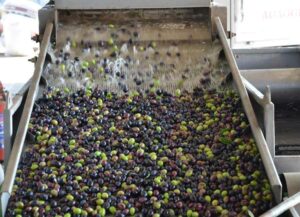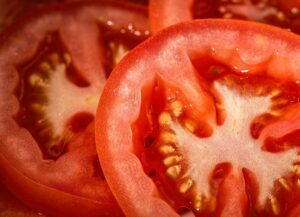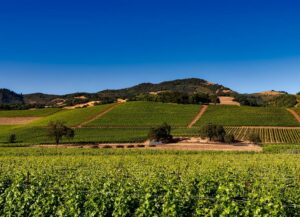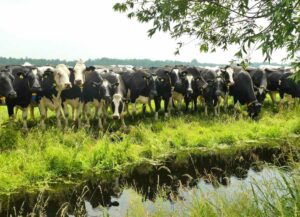Fernando Diaz
Pomegranate trees (Punica granatum L.) originate from East Asia and are traditionally grown in semiarid and subtropical areas. Pomegranate fruit consists of three parts: the arils (about 40% of the fruit weight); seeds (10%); and the peels which include the husk and interior network membranes (50%). During the industrial manufacturing of pomegranate juice, large amounts of co-products are produced.
The co-products are a rich source of phytochemicals. While the pomegranate peel is a rich source of condensed tannins (punicalagins and punicalins), the seeds mainly contains conjugated fatty acids. Therefore, beside their nutritional value, pomegranate co-products present high antioxidant and antimicrobial activity.
A study published in Animal Feed Science and Technology investigated the effect of replacing partially corn silage with ensiled pomegranate pomace in production performance and metabolic profiles of early lactation cows under heat stress condition. The researchers (Khorsandi et al., 2019) ensiled chopped fresh pomegranate pomace (composed by peel and seed) from a local fruit juice factory blended with urea at an inclusion rate of 20 g urea/kg DM (dry matter basis).
The table below shows nutrient composition of pomegranate pomace silage and corn silage. The pomace showed a high level of non-fiber-carbohydrates (NFC) and bioactive components. Total phenolic compounds and condensed tannin concentrations in pomegranate pomace were very high compared to corn silage (table).
| Nutrient | Pomegranate Pomace | Corn Silage |
| Dry Matter (DM) % | 31.2 | 28.4 |
| Crude Protein (%DM) | 13.6 | 8.5 |
| NDF (%DM) | 34.6 | 40.0 |
| ADF (%DM) | 22.6 | 20.5 |
| Fat (%DM) | 4.6 | 2.8 |
| NFC (%DM) | 43.3 | 26.9 |
| Ash (% DM) | 3.9 | 12.8 |
| Phenolic Compounds (% DM) | 4.9 | 0.45 |
| Condensed Tannins (% DM) | 0.4 | 0.02 |
During summer season (daily average THI = 72), multiparous Holstein cows (2 – 62 days in milk) were offered two diets, one containing 27% DM corn silage and the another including 15% DM corn silage and 12% DM pomegranate pomace silage. In addition, both diets contained 12.6% DM alfalfa hay and 60.4% DM of the same concentrate mix. Diets were isoenergetic (1.67 Mcal/kg DM) and isonitrogenous (15.7% DM).
Dry matter intake was similar between diets (25.6 kg/day); however, supplementing pomegranate pomace silage increased dairy cow performance significantly. Production of milk (48.0 vs. 44.8 kg/day), energy-corrected-milk (46.5 vs. 43.0 kg/day), milk protein (1.39 vs. 1.31 kg/day), and milk fat (1.61 vs. 1.45 kg/day) was greater in cows receiving pomegranate pomace compared with cows that were not fed this co-product.
In addition, the researchers reported that energy related metabolites (NEFA, BHBA, glucose, albumin) and total antioxidant status, evaluated in blood samples taken 4 hours after feeding, were not affected by diets.
In conclusion, industrial processing of vegetables and fruits usually generates large quantities of co-products that may be good feed alternatives for dairy cows. This study shows that ensiled pomegranate pomace has potential to replace corn silage in the diets and increase production performance in high production cows.
Reference
Simin Khorsandi, Ahmad Riasi, Mohammad Khorvash, Farzad Hashemzadeh. 2019. Nutrients digestibility, metabolic parameters and milk production in postpartum Holstein cows fed pomegranate (Punica granatum L.) by-products silage under heat stress condition. Animal Feed Science and Technology. 255:114213.
© 2019 Dairy Knowledge Center, LLC. All Rights Reserved.











